Over the past two months, we have provided ample amount of information regarding evaluation of mitral regurgitation. The goal of this blog is to discuss the 3 variables we use in quantifying the severity of mitral regurgitation (MR) and explain the first method to obtaining these values!
3 MEASURABLE VARIABLES
- Effective Regurgitant Orifice Area (EROA): measure of lesion severity
- Regurgitant Volume (RVol): measure of severity of volume overload
- Regurgitant Fraction (RF): ratio of RVol to forward SV specific to patient
EROA & RVol are the two values that provide the strongest predictors of clinical outcomes.
3 METHODS TO QUANTIFYING MR
We are able to obtain these values in three different methods:
- PISA Method (Flow Convergence)
- Stroke Volume Method (Pulsed Wave Doppler)
- Volumetric Method
For this blog, we are going to cover the first method: PISA
PISA METHOD
Proximal Isovelocity Surface Area (PISA) is a method based off of flow convergence. If you missed our prior blog over flow convergence, you can find it here.
This method is based off of the conservation of mass:
flow through the regurgitant orifice = flow through the isovelocity surface
It assumes the radius (r) occurs at the same time as the peak regurgitant velocity.
PISA method is able to provide us with:
- Regurgitant Flow
- EROA
- Regurgitant Volume
The regurgitant flow rate is the amount of regurgitant flow per second being pushed back into the LA. It’s the product from the surface area of the hemisphere and the aliasing velocity.
HOW TO PERFORM PISA
There are two steps to performing the PISA method.
STEP 1: MEASURING THE RADIUS (R)
- Zoom MV
- Color Doppler
- Shift Color Baseline DOWN (TTE) to 20-40 cm/sec
- Freeze to obtain mid-systolic frame
- Measure radius (r): point of color aliasing to vena contracta
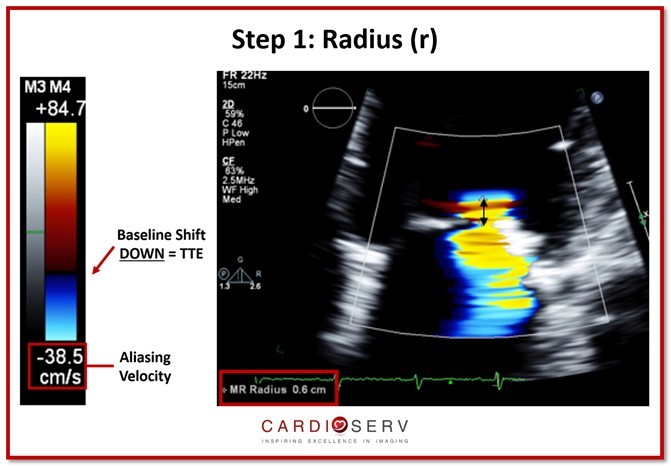
STEP 2: CW DOPPLER MR JET VELOCITY & MEASURE
- Zoom MV/LA
- Color Doppler
- CW Doppler MR
- VTI MR Velocity
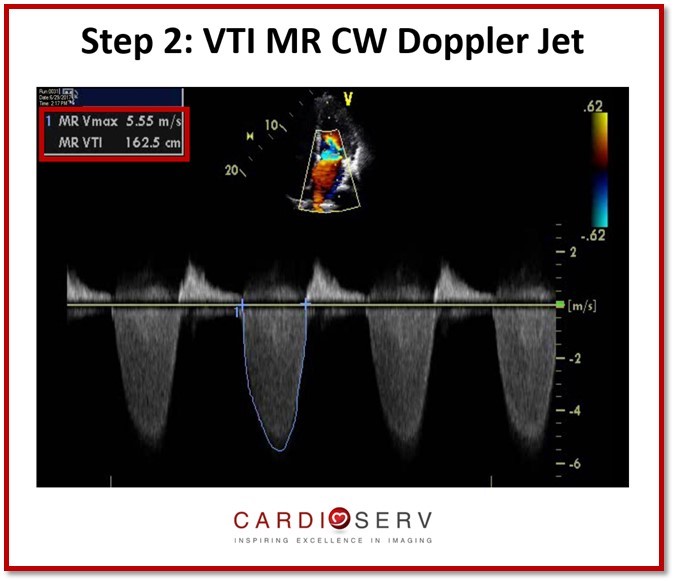
PISA EQUATIONS
Thankfully our machines do the math for us! But if you are the type of person that likes to know the breakdown process of how we obtain our outcome values, here are the equations!
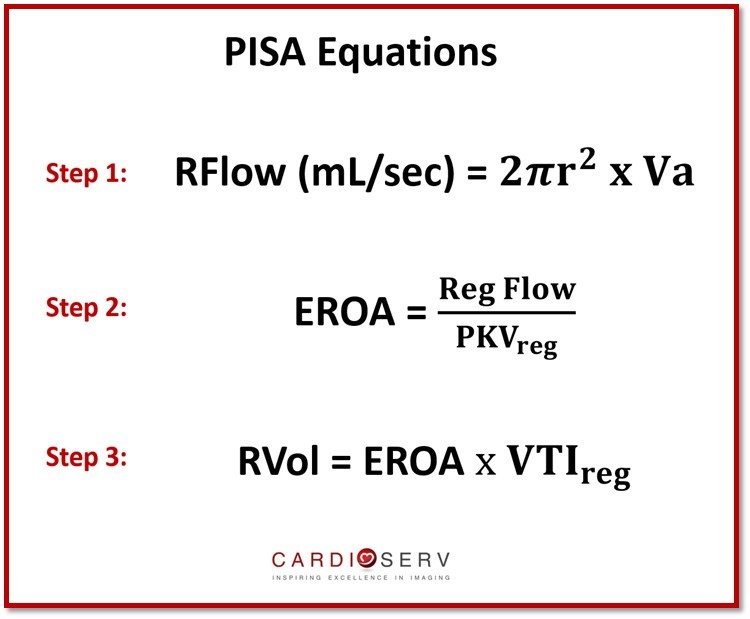
PISA MEASUREMENT VALUES
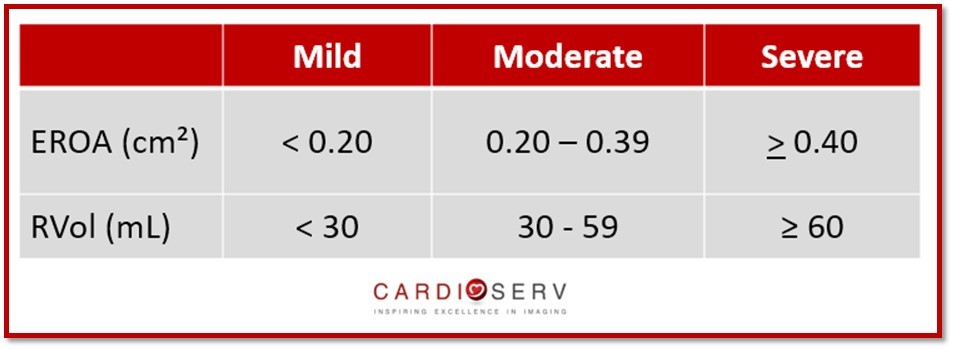
PISA LIMITATIONS
- CW Doppler & PISA Radius must be obtained at same point in cardiac cycle
- PISA method is calculated from a single-frame image
- Overestimation occurs if the jet is not holosystolic
- RVol more appropriate measurement to utilize if jet is not holosystolic
- Eccentric jets present challenge (angulation & inability record jet)
CASE EXAMPLE
Now that we understand how to perform the PISA method, let’s walk through a case example!
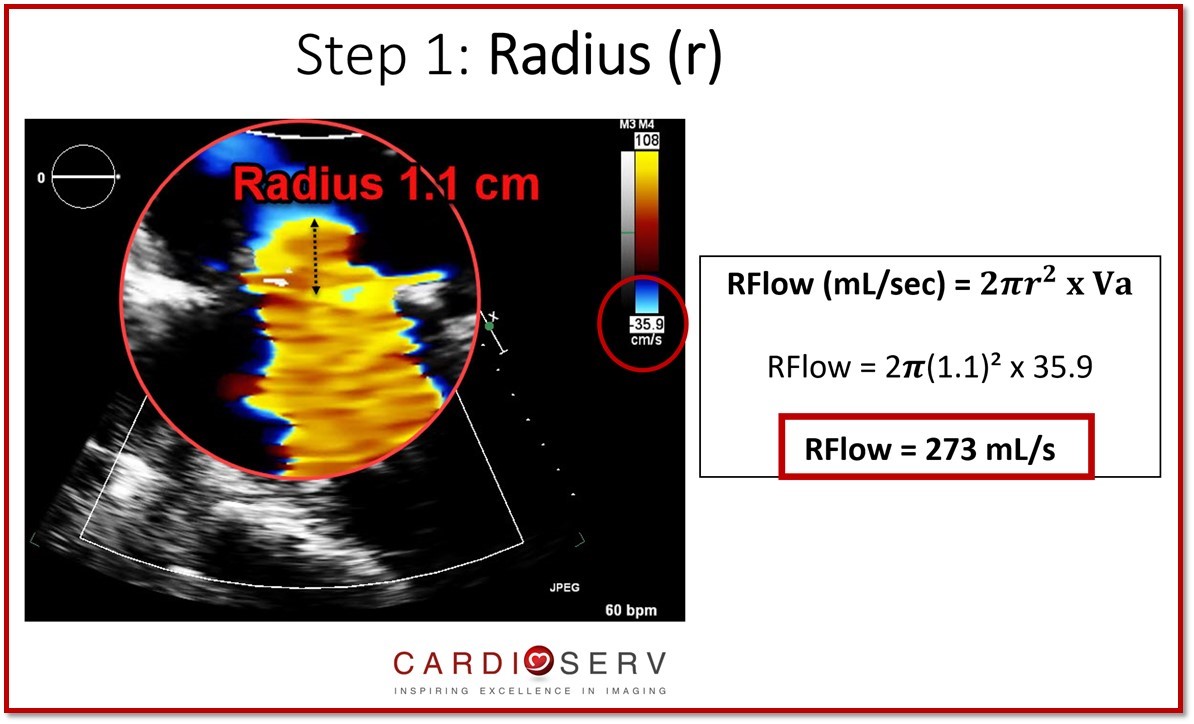
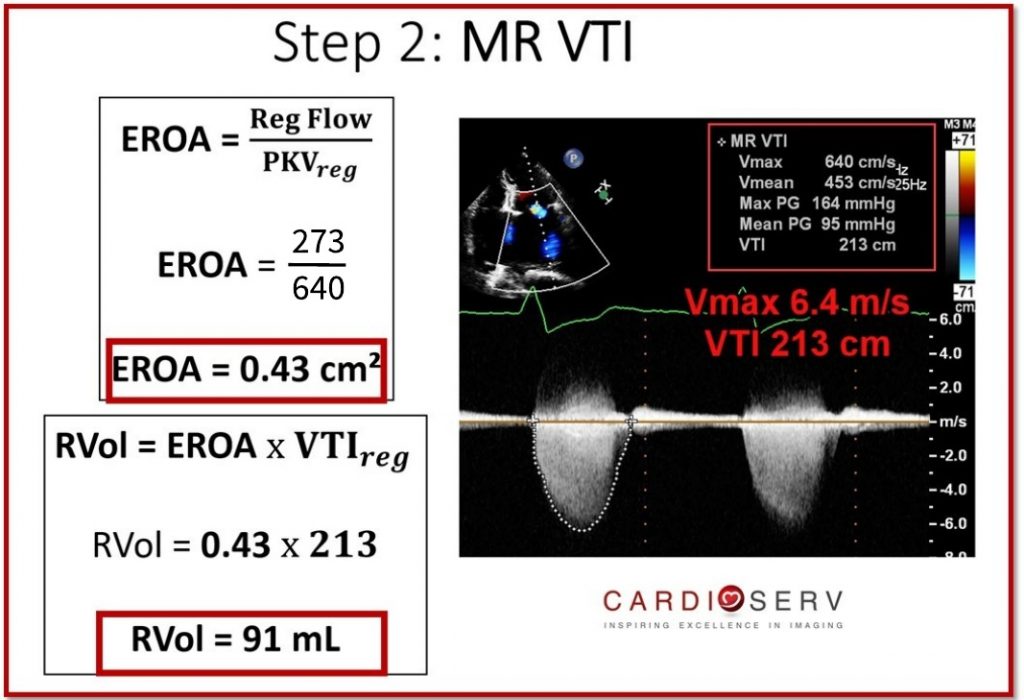
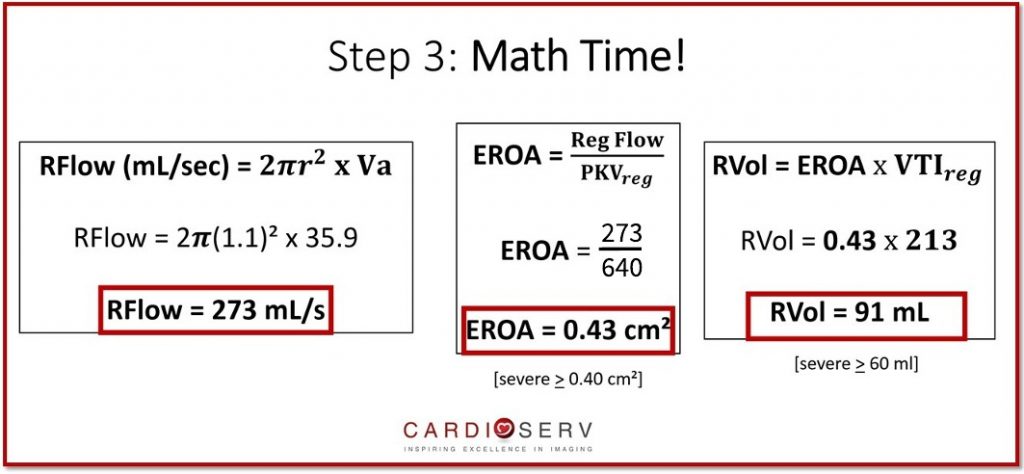
SUMMARY
This week we have provided you with a clear and easy understanding of how to perform PISA. Keep an eye out for next week’s blog that will cover the second method to quantifying mitral regurgitation!
We love to hear feedback from our readers! Our goal at CardioServ is to provide our readers a clear understanding of proper ways to evaluate and quantifying structures within the heart!

Andrea Fields MHA, RDCS
Stay Connected: LinkedIn, Facebook, Twitter, Instagram
References:
Zoghbi, W. A., MD, FASE, & Adams, D., RCS, RDCS, FASE. (2017). Recommendations for Noninvasive Evaluation of Native Valvular Regurgitation. JASE, 30, 4th ser., 1-69. Retrieved June 12, 2017.






